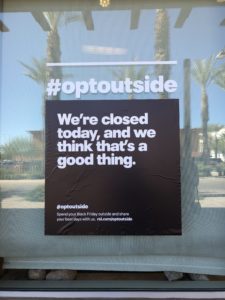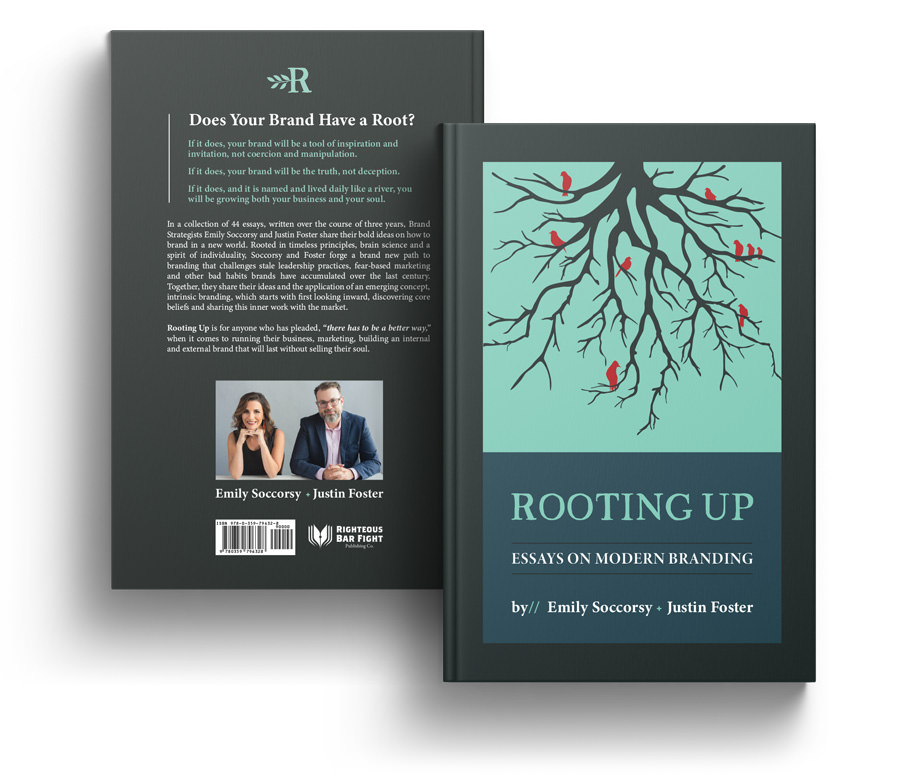Filed Under: Humanistic Marketing
Here’s the funny thing about differentiation: everyone talks about doing it, and very few actually do. Instead, they chase nuances and slightly-better statements. Brands obsess over taglines and slogans which make them sound the same, same, same. Businesses hire agencies who serve their industry only so they are sure to “fit in” to their space. Some brands differentiate in their marketing but not in the culture or experience.

Despite its popularity as a concept, we are still often asked, “How do I differentiate?” If you Google that question, you will find endless opinions and formulas and “secret hacks,” none of which will actually answer the question about how to differentiate.
That’s because the answer is both simple and complex.
First, you must be different. Second, you must articulate clearly what those differences are and then live them out in the brand consistently.
Might sound easy, but it’s not.
True differentiation is risky business these days when there is so much pressure to conform, to filter, to look, feel and present in a safe, standard way.
We like rubrics. They are a handy way to ground complex ideas and make them practical. Your unique set of differentiators (we recommend identifying three to five) should embody O.D.D.ness. That is, they should be Observable, Deliberate, Daring. A differentiator is not a differentiator until it is O.D.D.
To uncover your differentiators, apply these to your brand.
Is this differentiator Observable?
Something your audience can see or experience in three seconds that immediately sets you apart. A lot of different factors contribute. How you set up the brand experience can be observably different in:
Website design
Brand language
Communication with the client
Where and how you go above and beyond
Brand aesthetics
Colors
Packaging
Client gifts, etc.
How we embody this: To work with Root + River, we must first agree we are spiritually and strategically aligned to achieve the Root + River greater mission of inspiring leaders to go inward through the practice of intrinsic branding. And it says so, right there on our contact page.
Another example: Tesla offers not just product superiority but also applies art and design thinking to every aspect of the buying and driving experience. As one enters a Tesla store, or visits their website, or sits in their vehicles and experiences Tesla features, this is highly evident.
Pro tip: If you don’t know what is observably different about your brand, ask your customers and employees! We often conduct a Brand Language study before a client’s Root Session. One of the questions we ask is: “What makes us truly different from our competition?” Feel free to use that question and see what is revealed!
Are you being Deliberate about being different?
Differentiation is strategic, not reactionary. It’s ineffective and insincere to see what your competition is doing and choose to do the opposite just to be different. Differentiation is the result of an intentional leadership choice infused into every aspect of the brand. It is purposefully crafted/created for the audience to participate in or be moved by. Being deliberate sparks joy, delight, (and/or) gratitude in your audience, all of which are powerful, desired aspects of the human experience that will likely keep your audience coming back for more. Like in a healthy relationship, these are emotional investments consciously made, not arrived at by accident. You have to listen, pay attention, and be proactive about feedback to be deliberately different.
How we embody this: When we started Root + River we encouraged our clients to journal before, during and after our Root Sessions. Sometimes they would and sometimes they wouldn’t. We began to get the feeling the power and practice of journaling in connecting to personal branding was not fully being conveyed. During a deliberate review of our processes, we realized we could do more to emphasize the power of journaling and reflection, which was so important to us and our brand. To place intentional emphasis on journaling as a strategic technique, we began providing hard bound journals and pens to all of our Root Session clients — as well as giving them away as gifts. This deliberateness is something that now surprises and delights our clients, even if they don’t become journal-ers themselves.
Another example: Liquid Death. They sell water in cans. The water isn’t all that different from other spring water but everything else about the brand is. They have a deliberate irreverent, self-deprecating brand that reveals their sense of humor. They also take a deliberate stand on reducing plastic bottles — including providing pre-paid postage to ship empty plastic bottles back to Coke or Pepsi!
Pro tip: If you cannot think of something deliberately different about your brand today, harken back to when you first began. What’s something that went awry or was off early on that you adjusted? How did you change it? Why was it so important to alter it until it was right?
Are you Daring about what makes you different?
Being who you truly are as a brand is a kind of vulnerability. And as Brene Brown says, vulnerability is an act of courage. Being daring can be different for each brand depending on your culture, industry and circumstances. For some brands, being daring is boldly challenging the stale established practices and mindsets in your industry. For other brands, being daring is about innovation; introducing revolutionary products and services that change lives. It is daring to take social stands; to put the muscle of your brand behind a cause or movement. It is also daring to make your culture your No. 1 differentiator. In every case, you get to decide what is daring. But whatever you decide, it will require courage.
How we embody this: We have been told many times that the word “spiritual” doesn’t belong in business. We listened to the feedback, then we doubled-down. We vociferously challenge the illusion of separateness between soul and self; between business and humanity. 
Another example: REI is closed each year on Black Friday and encourages their customers to go be outside instead of in a store or a mall shopping. They post signage of beautiful outdoor scenes on their doors as a way of enticing people to go be in nature. Turning down profit to do the right thing is almost always a daring move.
Pro tip: With yourself or with a trusted advisor, examine what you really want to say to the world. Be unfiltered. Use profanity. Rip your competition. Get all of that out of your system, then determine what was just blowing off steam and what was a deep conviction. Identify the conviction and begin to build your differentiation around that in a consistent way.
Skill is a commodity. Information is a commodity. Quality is a commodity. Almost all of the things that brands used to differentiate themselves by are now commodities. In addition, advertising and marketing can be done in high volume and cheaply, crowding the market with more commodity-driven language and messaging. This adds to the din of sameness and contributes significantly to decision-fatigue from the market.
Say “No!” to all of that.
Be weird.
Be unusual.
Be yourself.
Be O.D.D.
